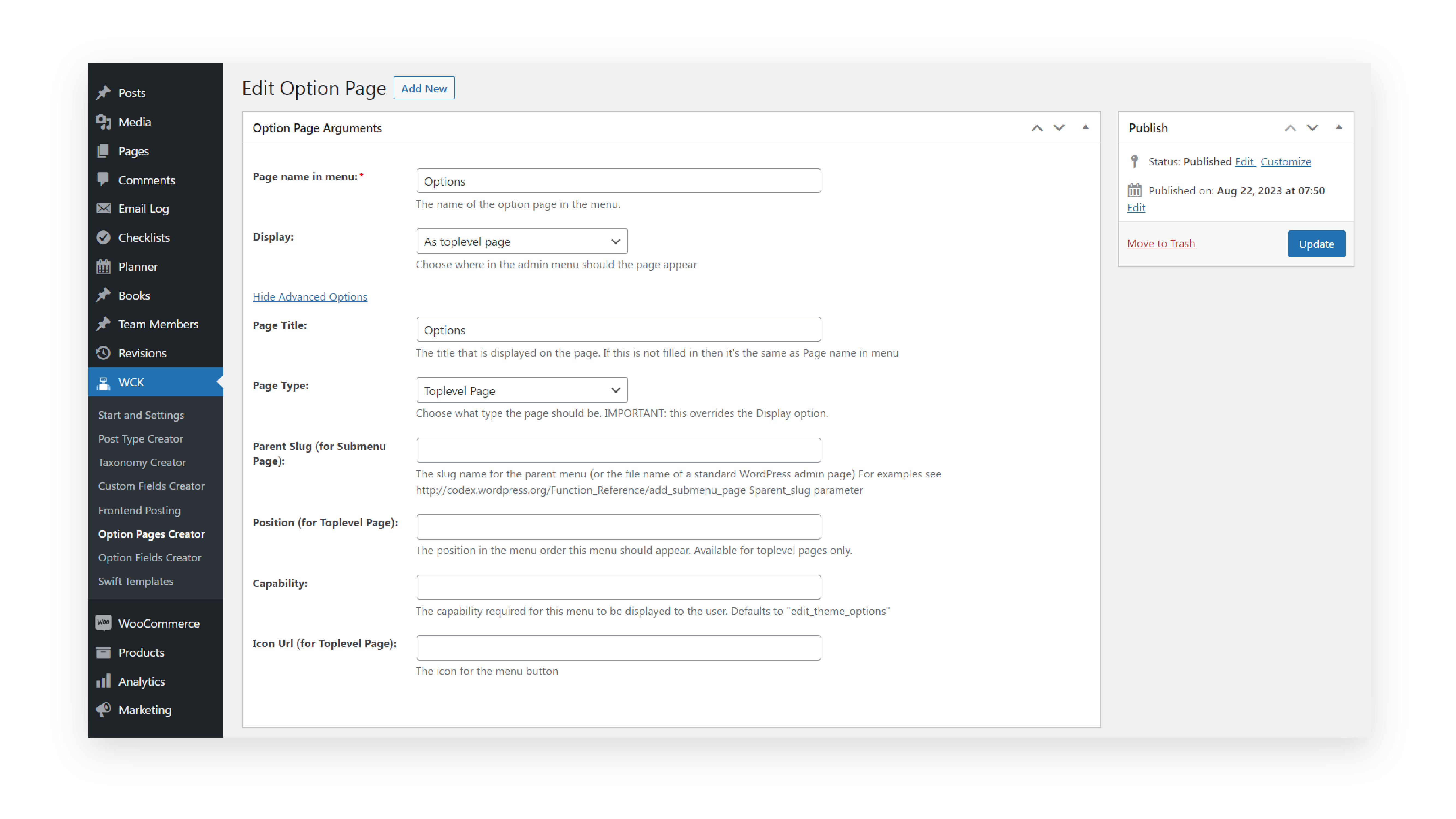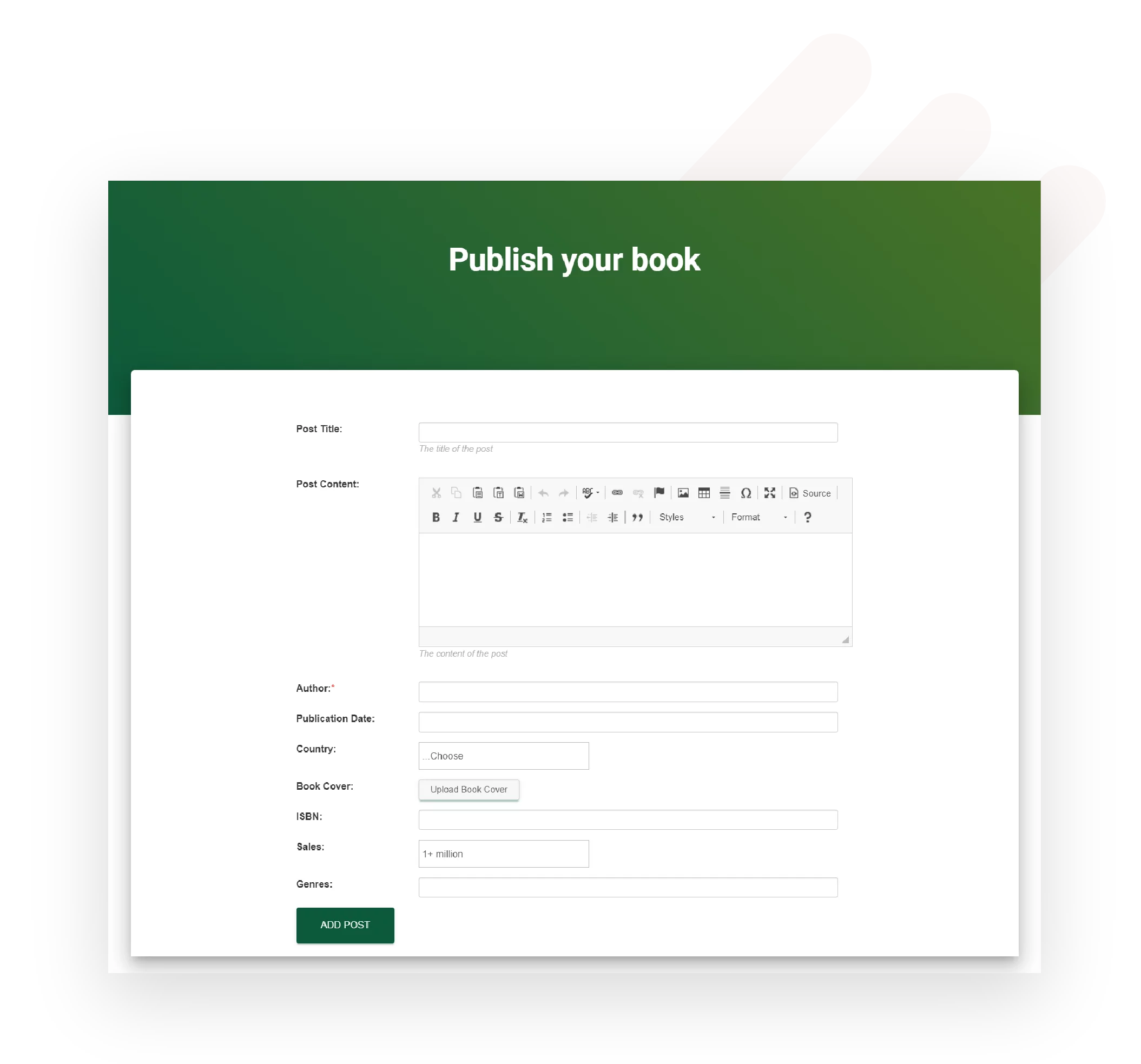With WCK you can create repeater custom fields, custom post types and taxonomies and build your front-end templates directly from the WP admin UI, in just a few clicks.
Take your site to the next level with custom fields and custom post types.
20,000+ site owners use WCK to build custom websites without writing a single line of PHP code.

Customize and organize your website to fit your needs using an easy-to-use interface and with no coding skills required.
Easy UI for setting up custom fields for your posts, pages or CPTs.
Organize your website content in a way that makes sense for you.

Take it all one step further and create new taxonomies and even "Option" pages to hold custom field groups.
Categorize your content so it's easily accessible.
Create advanced custom "Option" pages that hold custom field groups.

Build templates with ease from the WordPress dashboard and give your users the power to create content themselves.
Build your front-end templates directly from the WordPress admin UI, without writing any code.
Easily add and edit content from the front-end.

Rated 4.7/5 stars from 90+ real customer reviews.




Join 20,000+ website creators and build hassle free in half the time.
For beginners and solo creators.
For freelancers & professional creators.





Explore what WordPress Creation Kit has to offer.
Your most frequently asked questions, answered by our team of experts.
Currently all our payments are processed via Credit Card and PayPal and we only accept payments online.
When upgrading to a premium version, deactivate the free version before installing the Pro or Hobbyist version. This way all your settings will be ported over.
Sure, you just need to visit your account page and you can automatically upgrade for the price difference between licenses. This is valid for the first two months after purchase. To upgrade without losing any settings, deactivate the Hobbyist version, then install and activate the PRO one from the WP backend. After, delete the Hobbyist version.
No, each license is valid for one calendar year from the date of your purchase. License keys automatically renew yearly. For unlimited updates and support you can purchase an Unlimited License.
Your license grants you access to priority support, documentation resources, product downloads for one calendar year from your purchase date. You'll also continue receiving automatic updates to ensure WordPress compatibility, as well as great new features!
Your License is valid for one year from the purchase date. An active license will grant you access to automatic updates, new features and support. License keys automatically renew yearly.
The Serial Number needed for registering your version of WCK Custom Fields and Custom Post Types plugin is listed in your account page, along with some other useful information.
Yes we do, see our terms and conditions for refund requests.
Any questions related to WordPress Creation Kit can be asked on the support page.

Get started with WordPress Creation Kit or contact our support team if you still have questions.